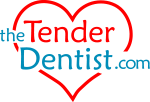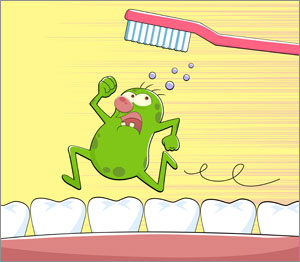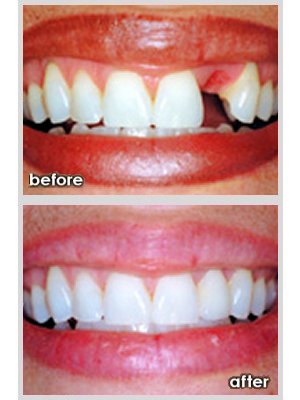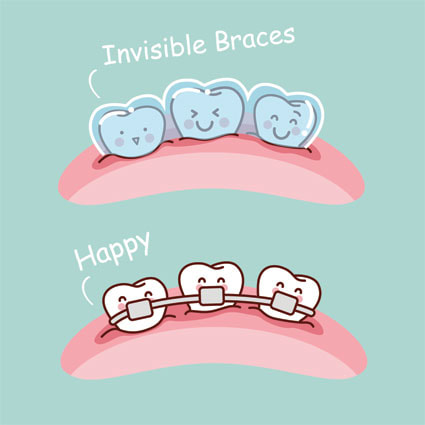Dental Implants
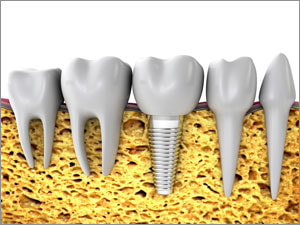
Dental implants are the best way to restore missing or irreparable teeth. The easiest way to imagine what a dental implant is, is to think of it as a man-made root. Since we don’t have to touch any other teeth and there are no other objects that are placed in the mouth that can be removed, dental implants are the most convenient way to restore missing or bad teeth. When placing implants, we always evaluate the quality and amount of bone that is available. For the best dental implant results, we need to know the volume and density of bone in the location of the planned implant.
What is a Dental Implant?
A dental implant is also referred to as an endosseous implant and/or a fixture. It typically interfaces with the jawbone to support a crown, bridge, or denture.
The most technologically advanced technique with the least radiation exposure is a 3D cone beam x-ray. With this 3D image we know exactly where the vital structures (nerves and sinuses) are so that we may stay away from them. We also learn what angle and location is ideal to restore a tooth when we place the dental implant. My philosophy is to work on the implants by imagining the final restoration that will go over the implant. That is usually a called a crown. In other words, we start from the end and work our way back to know where to exactly place the implant.
Dental implants are used to restore one tooth or multiple teeth and can even be used to stabilize and restore the whole mouth. Of course, it takes a lot more planning to restore the mouth. Bone may need to be augmented in cases where there is not enough to place the implant. For example, in the upper arch there is a space called the maxillary sinus that may have to be augmented with bone so that the first molar implant can be placed.
Another vital structure that must be carefully considered is the lower nerve which is called the inferior alveolar nerve. When there is not enough bone, sometimes it is impossible to place implants without putting the nerve in danger.
For this reason, it is wise to place allograft bone into an extraction site at the time of extraction. In other words, we fill the hole that used to be where the root was in preparation for placing an implant in the future.
The most technologically advanced technique with the least radiation exposure is a 3D cone beam x-ray. With this 3D image we know exactly where the vital structures (nerves and sinuses) are so that we may stay away from them. We also learn what angle and location is ideal to restore a tooth when we place the dental implant. My philosophy is to work on the implants by imagining the final restoration that will go over the implant. That is usually a called a crown. In other words, we start from the end and work our way back to know where to exactly place the implant.
Dental implants are used to restore one tooth or multiple teeth and can even be used to stabilize and restore the whole mouth. Of course, it takes a lot more planning to restore the mouth. Bone may need to be augmented in cases where there is not enough to place the implant. For example, in the upper arch there is a space called the maxillary sinus that may have to be augmented with bone so that the first molar implant can be placed.
Another vital structure that must be carefully considered is the lower nerve which is called the inferior alveolar nerve. When there is not enough bone, sometimes it is impossible to place implants without putting the nerve in danger.
For this reason, it is wise to place allograft bone into an extraction site at the time of extraction. In other words, we fill the hole that used to be where the root was in preparation for placing an implant in the future.
Gum Rehabilitation
|
GASP! You are told you need a deep cleaning. That sounds painful! Like a colonoscopy. GASP! Deep cleanings are really cleanings that are meant to fight periodontal infections. “Perio” means around and “dont” is Greek root meaning tooth. So if gums bleed or the bone around gums shows signs of bone loss, we have to clean the area to stop the problem from getting worse. The antimicrobial approach is used at The Tender Dentist because the root of the problem lies with harmful bacteria and other microorganisms that are present there.
So we fight the microbes and clean the tartar that houses the microbes and invite healthy ones to take their place. If the gums are sore and hurt to be touched we can make them numb but it’s not a must. Just like anywhere else in the body, pain usually means there is inflammation. Once we are successful, there should be no more pain. The key is to keep the harmful microbes away. Another way to find out which microbes are causing you trouble is through saliva testing. At The Tender Dentist your treatment will include help on how to use natural products to maintain health. |
Cosmetic Smile Makeovers
If cosmetic dentistry is something you have considered in the past please make sure to read the following information which is designed to help all Woodland Hills residents make an educated decision about going for it or not. It is a big commitment and usually not reversible so it’s best to be sure before you proceed. The following questions should be answered with maximum honesty:
This is a personal decision and it involves permanently changing your teeth, so to be sure you should know the following if you choose to have cosmetic dentistry performed:
You should consider your own temperament when making this decision. Are you able to undergo procedures without a problem or do you get very nervous? Will it bother you a lot if there is some cold sensitivity with the temps?
I’ve had patients that had considered all these questions and decided that they were ready. In those cases the focus is on the final result, and the outcome is fantastic. At The Tender Dentist, I will make sure all factors have been discussed and that you know what to expect during and after the treatment. I love to use E-max crowns or veneers for anterior cases because there is no dark metal in the crown. That’s important because there won’t be a dark line at the gum line in the future.
- Do you hide your smile in public?
- Do you think about what other people may think about your front teeth?
- Have you seen another person’s smile and wished to have one like theirs?
- Are your teeth discolored? If so does it really bother you?
- Are there Crowns or fillings that are differently colored showing in your smile?
This is a personal decision and it involves permanently changing your teeth, so to be sure you should know the following if you choose to have cosmetic dentistry performed:
- You will need to be numbed before the procedure. (not a big deal)
- We will probably have to shape the teeth using a high speed handpiece (i.e., drill).
- You will have to wear a temporary while the Lab makes your new crowns or veneers.
- There will be minor discomfort after treatment.
- You will have to be careful with the temps during the waiting period.
You should consider your own temperament when making this decision. Are you able to undergo procedures without a problem or do you get very nervous? Will it bother you a lot if there is some cold sensitivity with the temps?
I’ve had patients that had considered all these questions and decided that they were ready. In those cases the focus is on the final result, and the outcome is fantastic. At The Tender Dentist, I will make sure all factors have been discussed and that you know what to expect during and after the treatment. I love to use E-max crowns or veneers for anterior cases because there is no dark metal in the crown. That’s important because there won’t be a dark line at the gum line in the future.
E-Max Crowns Woodland Hills
Emax Crowns are made by a company called Ivoclar. The crowns are made from lithium disilicate mostly. Besides making me sound smart when I say it, lithium disilicate has qualities that are great for restoring teeth.
- It has a “see through” quality that makes your teeth look entirely natural.
- It can be adhesively bonded to teeth for maximum retention.
- It is very strong and will last a very long time. It has up to 4 times the compressive strength of other crown types.
Dental Bridges
What is a dental bridge? Just like the beautiful Tower Bridge pictured in London, dental bridges connect two sides of a gap.
|
To mend this gap, the teeth holding the bridge will need to be made smaller so a crown can be placed over them. So for ONE missing tooth you will get THREE crowns connected together, one for the “gap” and two for the “legs”. Bridges are permanently cemented and will last a long time, unless proper care for the bridge is not maintained. You can choose between a bridge and an implant when replacing a tooth. Usually they look the same when they are finished.
Compared to implants, bridges usually take less time to finish, and require special attention for home care because flossing won’t be as easy. Implants allow you to floss as you usually do. |
Adhesive Bonding of Dental Crowns
Dental Crowns can be “glued” on in two ways. Adhesive bonding creates a chemical bond between the tooth and the crown or veneer. This is much stronger than cementing which goes in the crown and fills the gap between crown and tooth so tight that it wants to stay on. We will shape the tooth to hold a crown by making it long and almost parallel.
The crown is etched with acid at the laboratory to prime the surface. A silane coupler is rubbed on the inside to create a bonding layer. Then the tooth is etched and bonded with bio safe adhesive, and the crown and tooth are linked with resin cement that is light cured. The adhesive will have the added benefit of sealing the dentinal tubules which reduces sensitivity to almost 0%. Finally, when the crown is to be cemented, we cure the resin with a blue light and create one continuous layer from tooth to adhesive to resin to silane to crown.
In fact, bonding is so strong that it can keep a veneer on a tooth by only attaching to one side and not covering the whole tooth. Now imagine you did a dental crown which covers the whole tooth and is parallel on either side, and you also used adhesive bonding. It will never come off! That is the process we use at The Tender Dentist. That is why I love using E-max crowns which can be bonded with resin.
The crown is etched with acid at the laboratory to prime the surface. A silane coupler is rubbed on the inside to create a bonding layer. Then the tooth is etched and bonded with bio safe adhesive, and the crown and tooth are linked with resin cement that is light cured. The adhesive will have the added benefit of sealing the dentinal tubules which reduces sensitivity to almost 0%. Finally, when the crown is to be cemented, we cure the resin with a blue light and create one continuous layer from tooth to adhesive to resin to silane to crown.
In fact, bonding is so strong that it can keep a veneer on a tooth by only attaching to one side and not covering the whole tooth. Now imagine you did a dental crown which covers the whole tooth and is parallel on either side, and you also used adhesive bonding. It will never come off! That is the process we use at The Tender Dentist. That is why I love using E-max crowns which can be bonded with resin.
Dental Fillings
When there is a cavity (which means a hole) in a tooth, we can sometimes just disinfect it and place in a filling. I do not use Mercury fillings to repair cavities in teeth so I will tell you about composite (commonly referred to as white teeth fillings).
We adhesively bond the tooth and place filling material, which is soft, into the cavity. Then we cure the filling using a blue light. The tooth filling turns from soft to hard, and during the process shrinks a little bit. That shrinkage is accounted for by placing the filling in small increments and making sure there is a good seal at the edges.
Composite fillings wear more quickly than other materials, so if the hole is too big, we should consider other ways of permanently fixing a tooth such as with inlays, onlays, or crowns.
We adhesively bond the tooth and place filling material, which is soft, into the cavity. Then we cure the filling using a blue light. The tooth filling turns from soft to hard, and during the process shrinks a little bit. That shrinkage is accounted for by placing the filling in small increments and making sure there is a good seal at the edges.
Composite fillings wear more quickly than other materials, so if the hole is too big, we should consider other ways of permanently fixing a tooth such as with inlays, onlays, or crowns.
Inlays and Onlays
When a tooth has been affected by a cavity or fracture, sometimes we can fix that portion of the tooth with a “puzzle piece” that fits into the broken or decayed part (after it’s disinfected). It’s a middle way between fillings and crowns. It’s better to use inlays and onlays if a filling won’t work, and if a crown would be too destructive to the healthy remaining tooth structure.
An Inlay is a lab-made piece that fits “into” the tooth. An Onlay is like an inlay except it covers one or more corners of the tooth.
We can determine which is best after we clean the tooth and remove any and all infected parts.
An Inlay is a lab-made piece that fits “into” the tooth. An Onlay is like an inlay except it covers one or more corners of the tooth.
We can determine which is best after we clean the tooth and remove any and all infected parts.
Invisalign
Invisalign is an ingenious product that allows us to move teeth without using braces.
Here are the benefits of Invisalign over conventional braces:
To help you decide if Invisalign is a good option for you we can do a Free Invisalign consult. Just email or call our office at (818) 224-4224.
- Can take them off for special events and more importantly, to clean your teeth and floss
- No wires…
- Less chance to have decalcification or decay due to plaque build up
To help you decide if Invisalign is a good option for you we can do a Free Invisalign consult. Just email or call our office at (818) 224-4224.
Sleep Apnea Treatment and Night Guards

A good night’s sleep will have the most impact on a person’s health throughout their lifetime. When the mind is rested and the body has healed itself through sleep, the morning can feel like a wonderful awakening.Sleep apnea is an obstacle to a good night sleep. In some cases, it can even reduce lifespan by up to 15 year. It contributes to high blood pressure, kidney problems, anxiety and depression, cardiovascular disease and other significant ailments.
Sleep apnea can also cause damage to the teeth through grinding and clenching which occurs in association with sleep apnea.
What is Sleep Apnea?
Sleep apnea is also referred to as obstructive sleep apnea or OSA and occurs when the airway through which we breathe gets blocked because of the relaxation of all the muscles around the airway. The most significant muscle is the tongue which can “fall back” in the mouth and cause the closure of the airway. More significant cases of OSA require a forced air machine called a CPAP. In mild or moderate cases, an appliance that helps the tongue stay in a more forward position is enough to treat sleep apnea.
Patients with sleep apnea often tell us that they snore and are tired during daytime hours. If you experience fatigue regularly ask the doc about it.
Since sleeping makes it hard to know exactly what is going on, a sleep study must be performed. An easy way to perform a sleep study is to wear a headband that records electrical activity of the brain which can then tell us if you are experiencing deep and uninterrupted sleep. One of the reasons why blood pressure is an issue with sleep apnea is because the body will send a jolt of adrenaline through the system in response to airway closure. So every few minutes the body is awakened from its restful sleep with an adrenaline dump and it takes time to return to a state of relaxation. The lack of sleep prevents the body from healing itself resting the mind.
Sleep apnea may not wake the person up but it will have its effects nevertheless. Frequent urination during night time is a sign of sleep apnea because the body is still in the wakeful state and creates urine at a higher rate than when you are in a restful sleeping space.
Other symptoms of sleep apnea include headaches and pain in the jaw due to clenching and grinding in the morning. At our Woodland Hills office, we will look for any signs or symptoms that are associated with sleep apnea. You may contact the office for any further information.
Sleep apnea can also cause damage to the teeth through grinding and clenching which occurs in association with sleep apnea.
What is Sleep Apnea?
Sleep apnea is also referred to as obstructive sleep apnea or OSA and occurs when the airway through which we breathe gets blocked because of the relaxation of all the muscles around the airway. The most significant muscle is the tongue which can “fall back” in the mouth and cause the closure of the airway. More significant cases of OSA require a forced air machine called a CPAP. In mild or moderate cases, an appliance that helps the tongue stay in a more forward position is enough to treat sleep apnea.
Patients with sleep apnea often tell us that they snore and are tired during daytime hours. If you experience fatigue regularly ask the doc about it.
Since sleeping makes it hard to know exactly what is going on, a sleep study must be performed. An easy way to perform a sleep study is to wear a headband that records electrical activity of the brain which can then tell us if you are experiencing deep and uninterrupted sleep. One of the reasons why blood pressure is an issue with sleep apnea is because the body will send a jolt of adrenaline through the system in response to airway closure. So every few minutes the body is awakened from its restful sleep with an adrenaline dump and it takes time to return to a state of relaxation. The lack of sleep prevents the body from healing itself resting the mind.
Sleep apnea may not wake the person up but it will have its effects nevertheless. Frequent urination during night time is a sign of sleep apnea because the body is still in the wakeful state and creates urine at a higher rate than when you are in a restful sleeping space.
Other symptoms of sleep apnea include headaches and pain in the jaw due to clenching and grinding in the morning. At our Woodland Hills office, we will look for any signs or symptoms that are associated with sleep apnea. You may contact the office for any further information.
